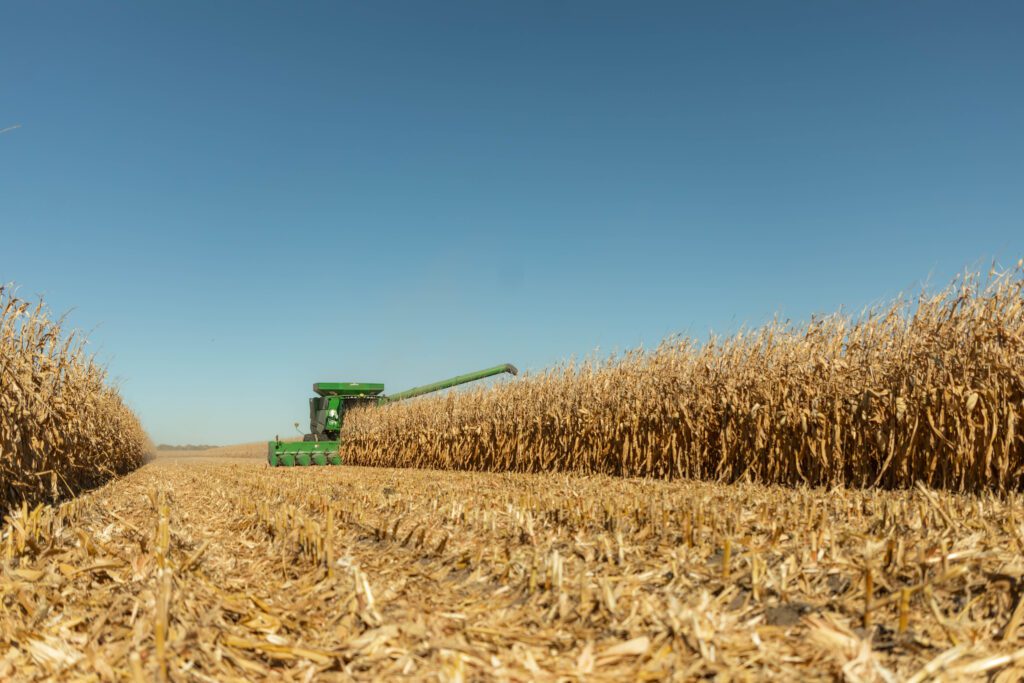
By Jerry Hartsock & Dakota Miller
Cutting Edge Consulting & Research Services
Harvest is not only a very busy time of reaping the rewards of the preparation and work that went into producing the 2024 crop, but it is also the time to keep your eye on the sun rising on the 2025 season. Everything we do from here through fall directly affects how we are setting up the planter next spring and ultimately the success of the 2025 crop. The majority of yield potential is determined by the time the planter leaves the field. Those who took the time and paid close attention to the details throughout planting are sitting in a much better position coming into harvest with a much more consistent ear count.
Before combines start rolling there are many things to consider and prepare for. You cannot stop scouting in August and early September for a multitude of reasons, but one is to establish a well-thought-out harvest priority list and attack plan. Obviously planting date and maturity directly impact that list, however, there are other factors to consider when developing a harvest priority list. If a field has suffered from lodging/rootworm feeding or is developing anthracnose or other stalk rots, it will need to be moved up in the harvest priority list to get out of the field as soon as possible. If there were areas that ran short of nutrients late, especially nitrogen, sulfur, or potassium, consider these farms to move up on the harvest list as well. If these nutrients are short, the plant will cannibalize sooner reducing standability and yield. If someone applied a well-timed fungicide, those farms are likely to be standing much better, have less disease, and maintain better staygreen minimizing losses through harvest. Although following the Maximum Profit System™ by feeding and fungiciding your crop leads to much better late-season intactness, it is not a reason to delay harvest. Harvesting earlier and at higher moistures (24-25%+) has a bevy of benefits, but the most important reason is achieving higher yields of adding up to 20 more bpa rather than waiting for Mother Nature to penalize you and dry on her time in the field. This doesn’t include the bushels you will save by not enduring field losses such as shelling at the head and ears dropping.
Earlier harvest opens a window and gets you a step ahead on residue management, compaction alleviation, and fertilization. With some of the exceptional yields that are going to be achieved this year, there is going to be some extra residue to deal with in places. Succeeding with residue management starts at the combine with settings in place to distribute the residue evenly across the full width of the machine. There are also great tillage tools that specialize in residue management like the true vertical tillage tools (ex: Krause Excelerator, Great Plains Turbo-Max, Salford, John Deere) which will chop and size-up the residue and throw a little bit of soil on top to help hold the residue in place. Putting it in direct contact with microbes to start the breakdown process quicker. Harvesting earlier in the fall will result in more advanced residue breakdown, because microbes are very active at those warmer temperatures. Once the temperatures start dropping below 50 degrees, microbes drastically slow down and do not break down residue near as quickly. Microbial activity ceases at 43 degree and below.
With lower commodity prices, we see this as an even more critical time to have more bushels to sell. We cannot produce more bushels if we do not properly feed that crop. To be efficient with a fertility plan it takes mindful soil testing and consideration of crop rotation, because we believe you have to properly fertilize for the 2025 crop and not rely on fertility done ahead of the 2024 crop to get you through two seasons. Someone who can see the bigger picture of achieving higher yields at a profitable level needs to oversee the development this fertility plan. There are ways to be efficient with fertilizing and not go backwards on yield. Having a starter fertilizer system on the corn planter is a much more efficient way to deliver nutrients to the root system compared to a broadcast system. Strip-till is another great option to use to place key nutrition that can’t be delivered with the planter in a band where the next crop will be planted and this also can potentially help eliminate a tillage pass.
Now is not the time to give up or stop looking. It is the time to evaluate, adapt, and develop a game plan to not only maximize the 2024 crop and get it in the bin, but also set yourself up for a successful start to the 2025 season. Listen to the money makers on your farming circle of influence to stay positive, including your AgVenture Yield Specialist or salesperson who specializes in this.
Reap the success of your endeavors this fall and enjoy harvest season!
Opinions expressed and any recommendations mentioned are of Cutting Edge Consulting & Research Services and its employees.